Trajectory Tracking Control of a Manipulator Based on an Adaptive Neuro-Fuzzy Inference System
Abstract
:1. Introduction
2. Materials and Methods
2.1. The Mechanical Structure of the Manipulator
2.2. Hydraulic Drive System of the Manipulator
3. Kinematic Analysis of the Manipulator
3.1. Kinematic Analysis
3.2. Trajectory Planning
4. Hydraulic Manipulator System Modeling and Controller Design
4.1. Mathematical Model of the Manipulator System
4.2. Mathematical Model of the Hydraulic System
4.3. Dynamic Coupling Equation of the Hydraulic Manipulator System
4.4. Design of ANFIS Self-Tuning PID Controller
4.4.1. Fuzzy PID Controller
4.4.2. Design of ANFIS-PID Controller
5. Simulation Results and Analysis
6. Conclusions
Author Contributions
Funding
Institutional Review Board Statement
Informed Consent Statement
Data Availability Statement
Acknowledgments
Conflicts of Interest
References
- Baek, J.; Jin, M.; Han, S. A new adaptive sliding-mode control scheme for application to robot manipulators. IEEE Trans. Ind. Electron. 2016, 63, 3628–3637. [Google Scholar] [CrossRef]
- Zhang, L.Y.; Liu, L.Z.; Wang, Z.; Xia, Y.Q. Continuous finite-time control for uncertain robot manipulators with integral sliding mode. Inst. Eng. Technol. 2018, 12, 1621–1627. [Google Scholar] [CrossRef]
- Guan, C.; Pan, S.X. Nonlinear adaptive robust control of single-rod electro-hydraulic actuator with unknown nonlinear parameters. Trans. Control Syst. Technol. 2008, 16, 434–445. [Google Scholar] [CrossRef]
- Guo, K.; Wei, J.H.; Tian, Q.Y. Nonlinear adaptive position tracking of an electro-hydraulic actuator. J. Mech. Eng. Sci. 2015, 229, 3252–3265. [Google Scholar] [CrossRef]
- Cui, Y. Study on Hydraulic Robot Actuator Control based on Fuzzy Algorithm; Harbin University of Science and Technology: Harbin, China, 2016. [Google Scholar]
- Zeng, Z.L.; Wu, Y.P.; Li, W.X. Synthetical modeling and fuzzy control simulation of a manipulator-hydraulic drive system. J. Heilongjiang Inst. Sci. Technol. 2004, 14, 96–99. [Google Scholar]
- Sharma, R.; Rana, K.P.S.; Kumar, V. Performance analysis of fractional order fuzzy PID controllers applied to a robotic manipulator. Expert Syst. Appl. 2014, 41, 4274–4289. [Google Scholar] [CrossRef]
- Krishna, S.; Vasu, S. Fuzzy PID based adaptive control on industrial robot system. Mater. Today Proceeding 2018, 5, 13055–13060. [Google Scholar] [CrossRef]
- Jin, X.; Chen, K.; Zhao, Y.; Ji, J.T.; Jing, P. Simulation of hydraulic transplanting robot control system based on fuzzy PID controller. Measurement 2020, 164, 108023–108031. [Google Scholar] [CrossRef]
- Hao, W.R.; Kan, J.M. Application of self-tuning fuzzy proportional-integral-derivative control in hydraulic crane control system. Adv. Mech. Eng. 2016, 8, 1687814016655258. [Google Scholar] [CrossRef] [Green Version]
- Er, M.J.; Sun, Y.L. Hybrid fuzzy proportional-integral plus conventional derivative control of linear and nonlinear systems. Trans. Ind. Electron. 2001, 48, 1109–1117. [Google Scholar]
- Yang, Y.; Zhang, Q.J. Design of self-optimizing FPID controller with particle swarm algorithm. Electr. Autom. 2018, 201–204. [Google Scholar] [CrossRef]
- Kumar, N.; Rani, M. Neural network-based hybrid force/position control of constrained reconfigurable manipulators. Neurocomputing 2021, 420, 1–14. [Google Scholar] [CrossRef]
- Kang, E.; Qiao, H.; Gao, J.; Yang, W.J. Neural network-based model predictive tracking control of an uncertain robotic manipulator with input constraints. ISA Trans. 2020, 109, 89–101. [Google Scholar] [CrossRef]
- Jin, J.; Gong, J.Q. An interference-tolerant fast convergence zeroing neural network for dynamic matrix inversion and its application to mobile manipulator path tracking. Alex. Eng. J. 2021, 60, 659–669. [Google Scholar] [CrossRef]
- Liu, C.X.; Zhao, Z.J.; Wen, G.L. Adaptive neural network control with optimal number of hidden nodes for trajectory tracking of robot manipulators. Neurocomputing 2019, 350, 136–145. [Google Scholar] [CrossRef]
- Yang, Z.Q.; Peng, J.Z.; Liu, Y.H. Adaptive neural network force tracking impedance control for uncertain robotic manipulator based on nonlinear velocity observer. Neurocomputing 2019, 331, 263–280. [Google Scholar] [CrossRef]
- Jang, J.S.R. ANFIS: Adaptive-network-based fuzzy inference system. IEEE Trans. Syst. Man Cybern. 1993, 23, 665–685. [Google Scholar] [CrossRef]
- Abderrahim, B.; El Houssine, E.C.M.; Hassan, S.; Hicham, A.E.; Bouras, A. Intelligent ANFIS controller of two cooperative 3-DOF manipulators: The case of manipulation under non-slip constraints. In Proceedings of the 2022 2nd International Conference on Innovative Research in Applied Science, Engineering and Technology (IRASET), Meknes, Morocco, 3–4 March 2022; pp. 1–7. [Google Scholar]
- Lazreg, M.; Benamrane, N. Hybrid system for optimizing the robot mobile navigation using ANFIS and PSO. Robot. Auton. Syst. 2022, 153, 104114. [Google Scholar] [CrossRef]
- Lee, D.; Seo, T.; Kim, J. Optimal design and workspace analysis of a mobile welding robot with a 3P3R serial manipulator. Robot. Auton. Syst. 2011, 59, 813–826. [Google Scholar] [CrossRef]
- Kumar, V.; Rana, K.P.S.; Kler, D. Efficient control of a 3-link planar rigid manipulator using self-regulated fractional-order fuzzy PID controller. Appl. Soft Comput. J. 2019, 82, 105531. [Google Scholar] [CrossRef]
- Ding, W.H.; Deng, H.; Xia, Y.M.; Duan, X.G. Tracking control of electro-hydraulic servo multi-closed-chain mechanisms with the use of an approximate nonlinear internal model. Control Eng. Pract. 2017, 58, 225–241. [Google Scholar] [CrossRef]
- Yousif, H.M.; Ganesh, K. Internal type-2 fuzzy position control of electro-hydraulic actuated robotic excavator. Int. J. Min. Sci. Technol. 2012, 22, 437–445. [Google Scholar]
- Yuan, F. Optimization Design of Cam-Robot Hydraulic Servo Motor; Shanghai Jiao Tong University: Shanghai, China, 2017. [Google Scholar]
- Kim, J.; Jin, M.; Chio, W.; Lee, J. Discrete time delay control for hydraulic excavator motion control with terminal sliding mode control. Mechatronics 2019, 60, 15–25. [Google Scholar] [CrossRef]
- Zhang, X.J. Study on the adaptive network-based fuzzy inference system ans simulation. Electron. Des. Eng. 2012, 20, 11–13. [Google Scholar]
- Jiang, K.; Zhang, T.; Feng, Z.X. AN ANFIS-PID control strategy for a semi-active suspension with magneto rheological damper. Modul. Mach. Tool Autom. Manuf. Tech. 2016, 4, 80–83. [Google Scholar]
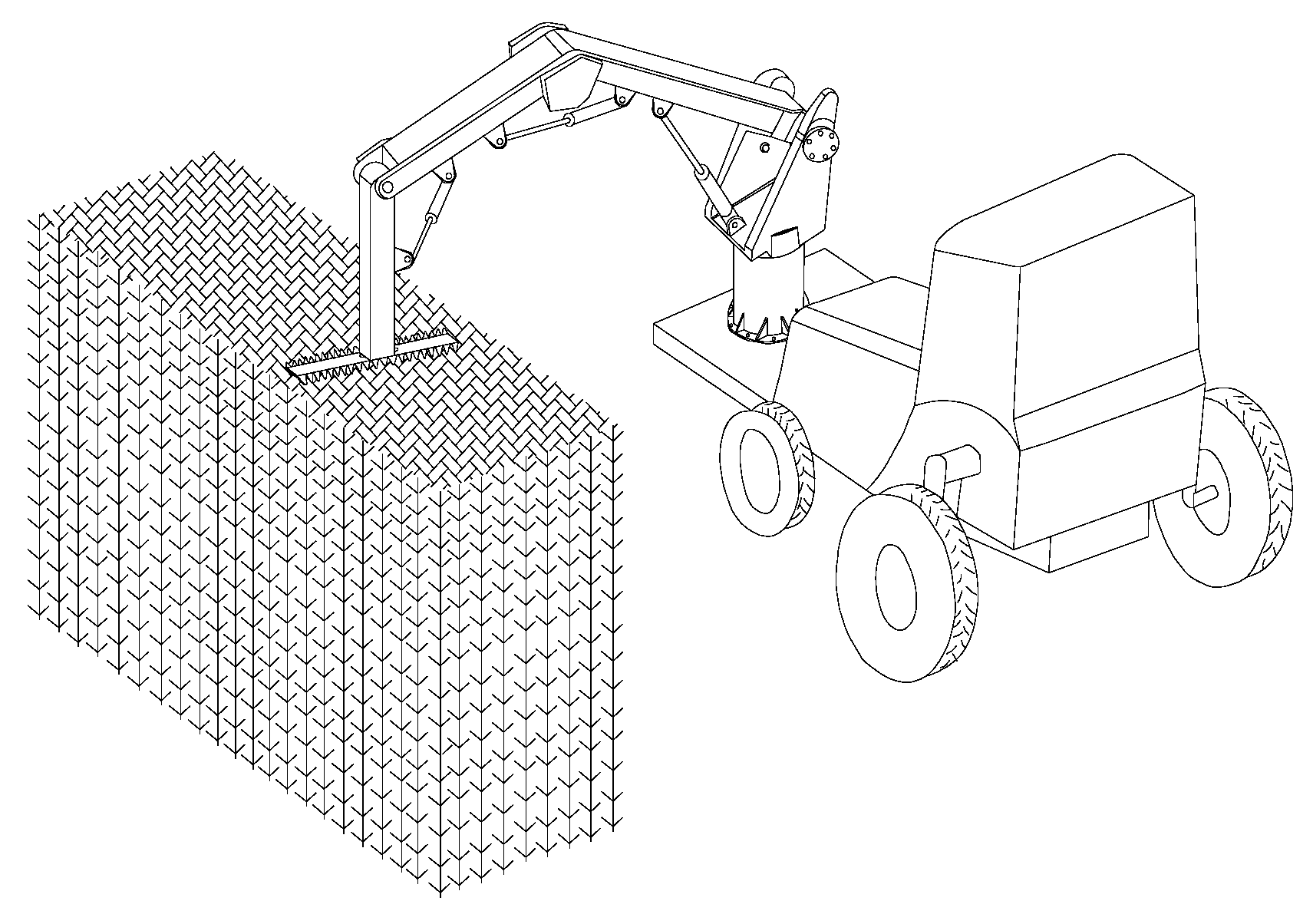
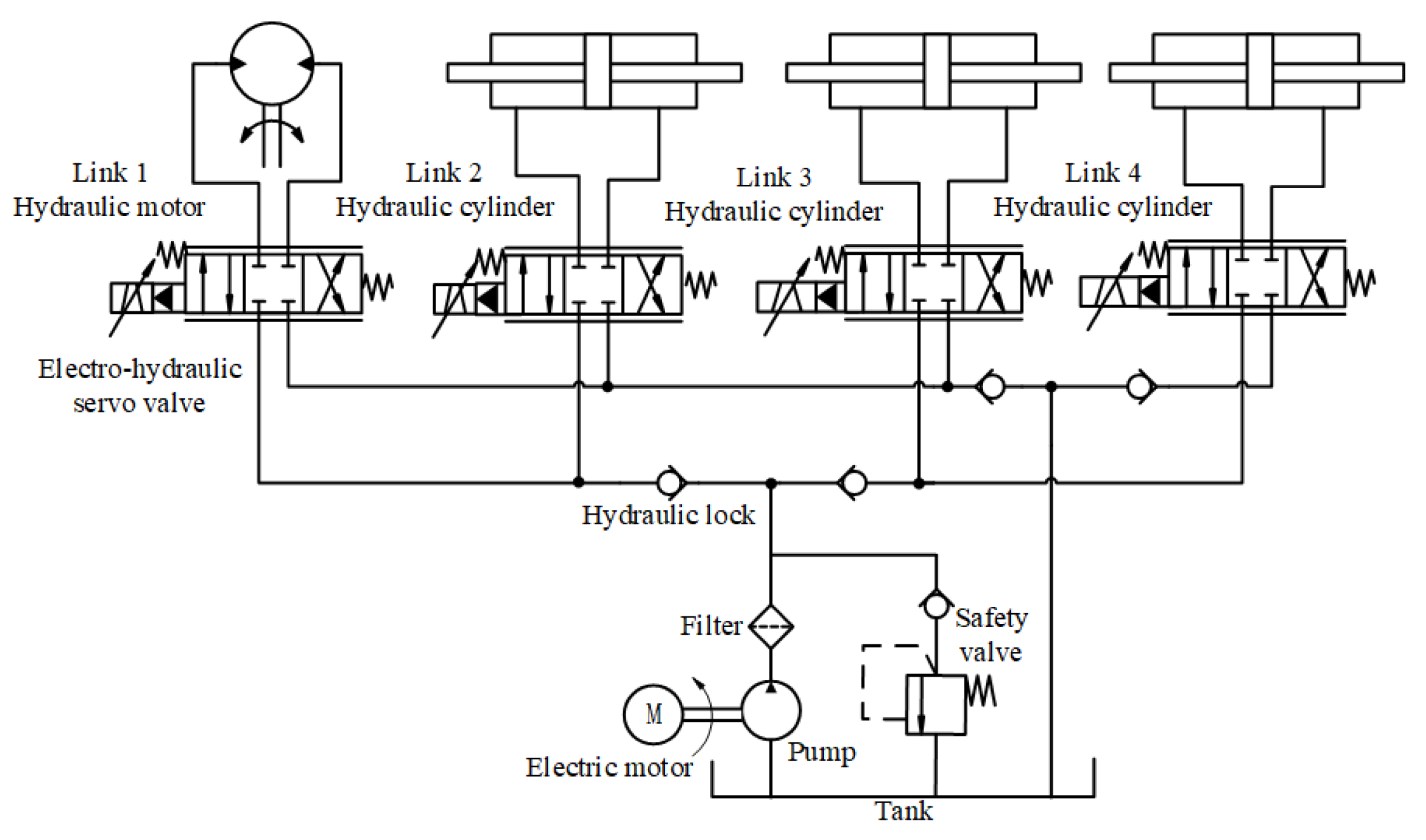

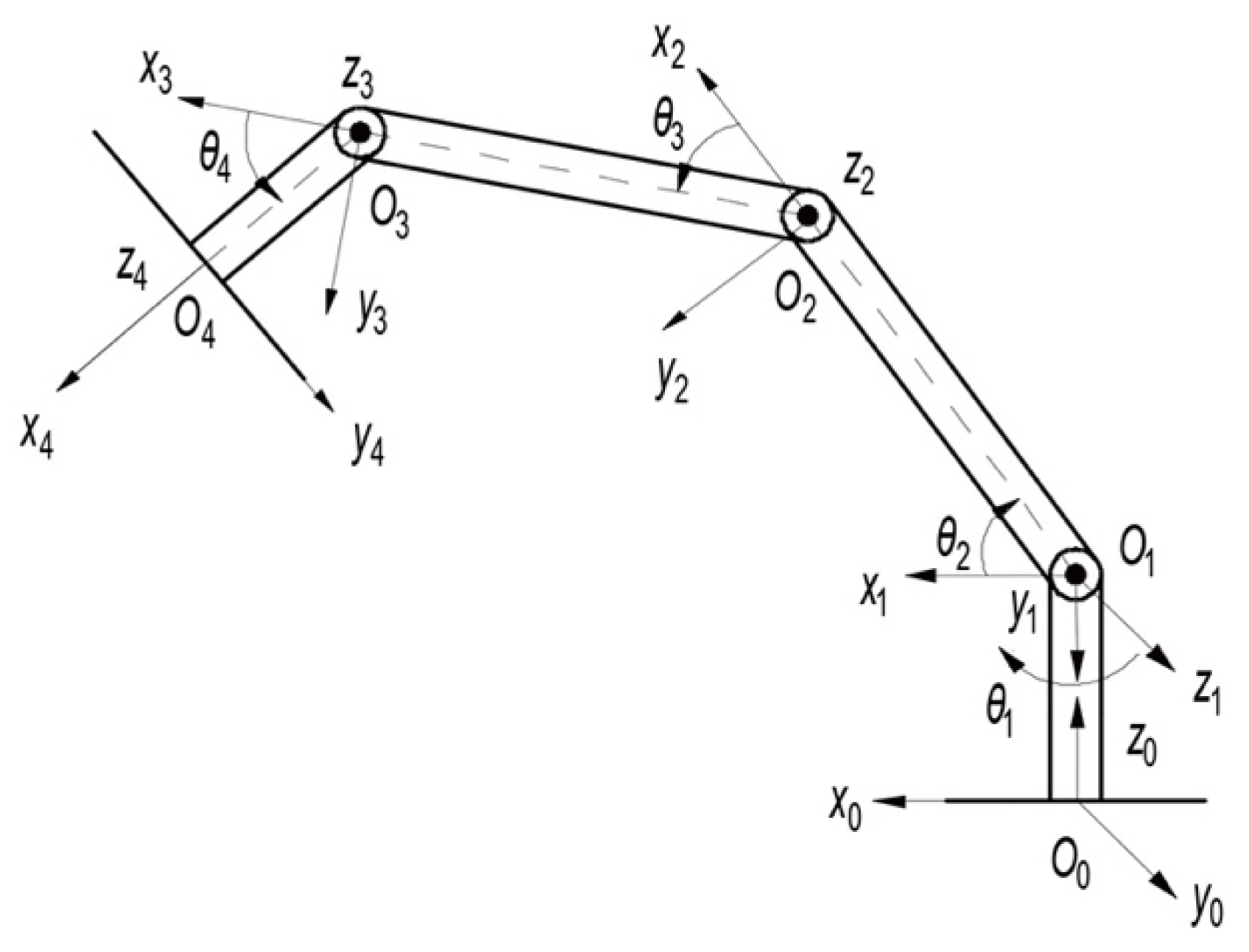
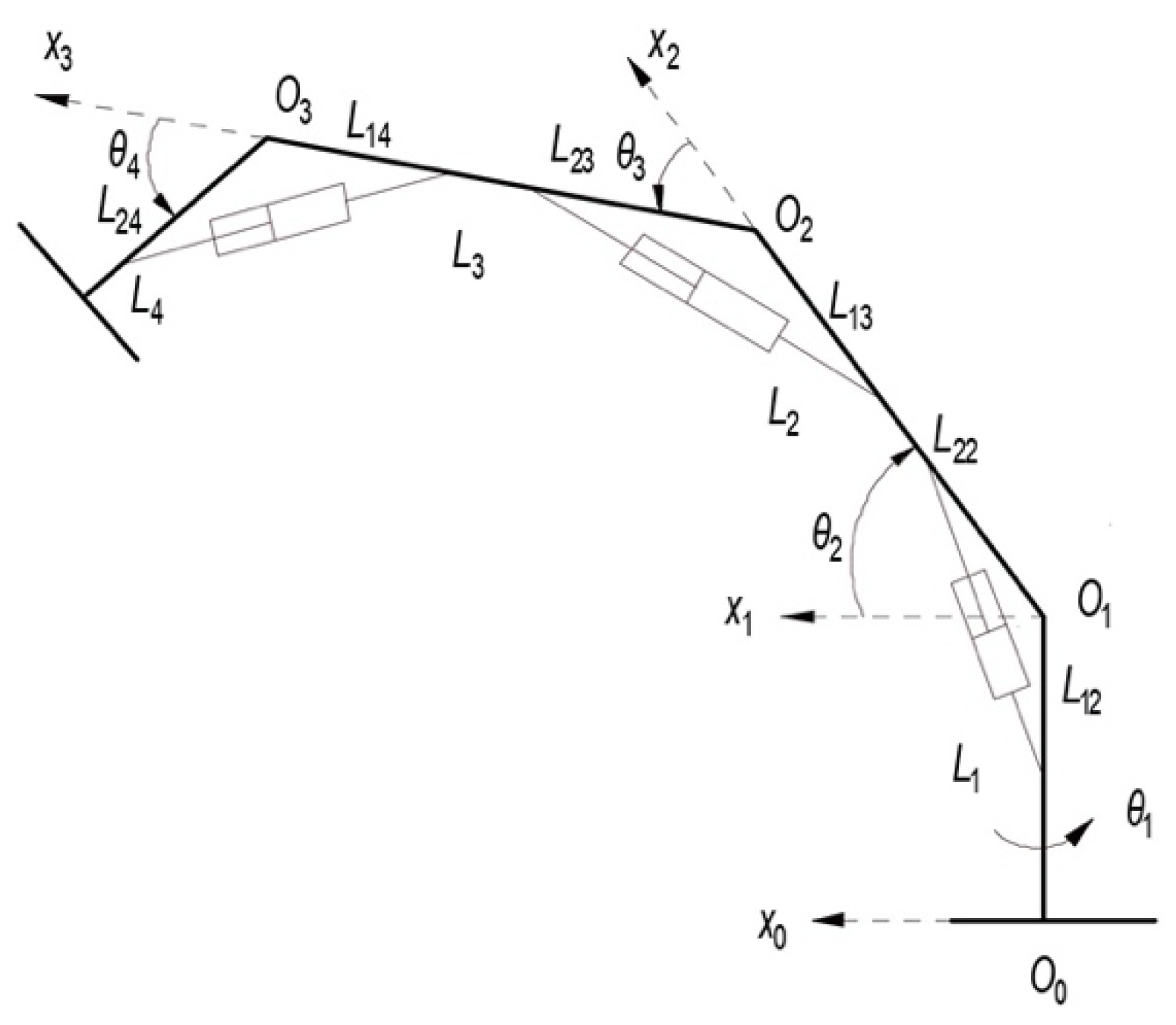
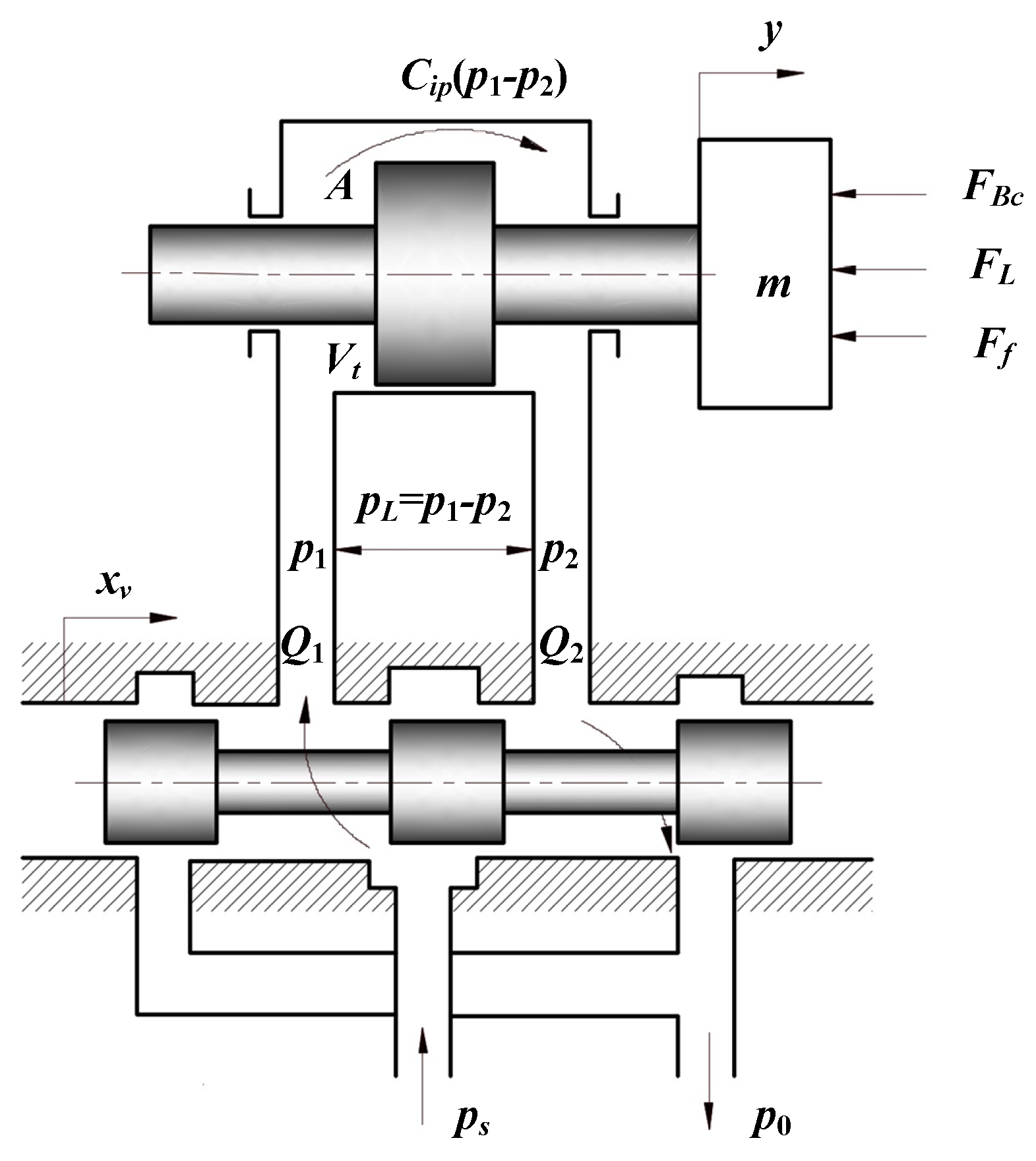
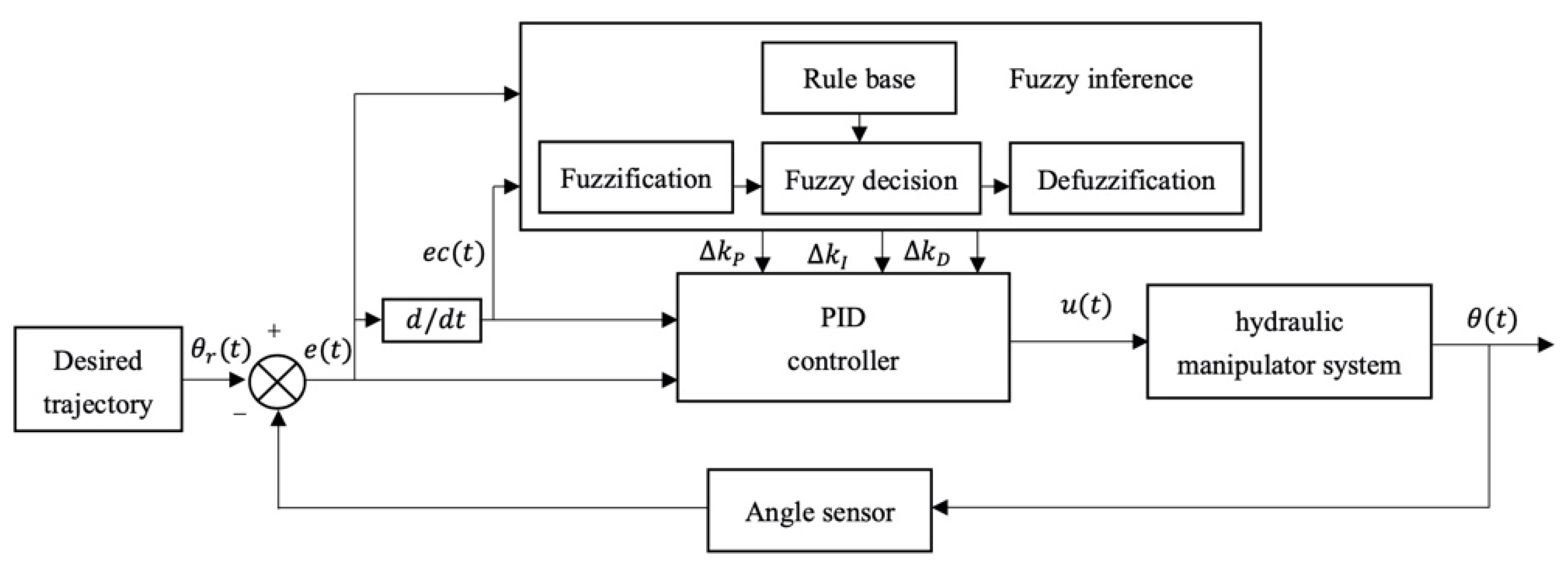





| Joint | Mean Absolute Error (rad) | Root Mean Square Error (rad) | ||||
|---|---|---|---|---|---|---|
| PID | FPID | ANFIS-PID | PID | FPID | ANFIS-PID | |
| 1 | 0.082699 | 0.016138 | 0.000294 | 0.096532 | 0.019189 | 0.000539 |
| 2 | 0.031882 | 0.009513 | 0.000282 | 0.040795 | 0.012259 | 0.000366 |
| 3 | 0.038149 | 0.012045 | 0.000240 | 0.041039 | 0.013060 | 0.000282 |
| 4 | 0.027114 | 0.013934 | 0.000233 | 0.029157 | 0.015178 | 0.000320 |
Disclaimer/Publisher’s Note: The statements, opinions and data contained in all publications are solely those of the individual author(s) and contributor(s) and not of MDPI and/or the editor(s). MDPI and/or the editor(s) disclaim responsibility for any injury to people or property resulting from any ideas, methods, instructions or products referred to in the content. |
© 2023 by the authors. Licensee MDPI, Basel, Switzerland. This article is an open access article distributed under the terms and conditions of the Creative Commons Attribution (CC BY) license (https://creativecommons.org/licenses/by/4.0/).
Share and Cite
Han, J.; Wang, F.; Sun, C. Trajectory Tracking Control of a Manipulator Based on an Adaptive Neuro-Fuzzy Inference System. Appl. Sci. 2023, 13, 1046. https://doi.org/10.3390/app13021046
Han J, Wang F, Sun C. Trajectory Tracking Control of a Manipulator Based on an Adaptive Neuro-Fuzzy Inference System. Applied Sciences. 2023; 13(2):1046. https://doi.org/10.3390/app13021046
Chicago/Turabian StyleHan, Jiangyi, Fan Wang, and Chenxi Sun. 2023. "Trajectory Tracking Control of a Manipulator Based on an Adaptive Neuro-Fuzzy Inference System" Applied Sciences 13, no. 2: 1046. https://doi.org/10.3390/app13021046
APA StyleHan, J., Wang, F., & Sun, C. (2023). Trajectory Tracking Control of a Manipulator Based on an Adaptive Neuro-Fuzzy Inference System. Applied Sciences, 13(2), 1046. https://doi.org/10.3390/app13021046






